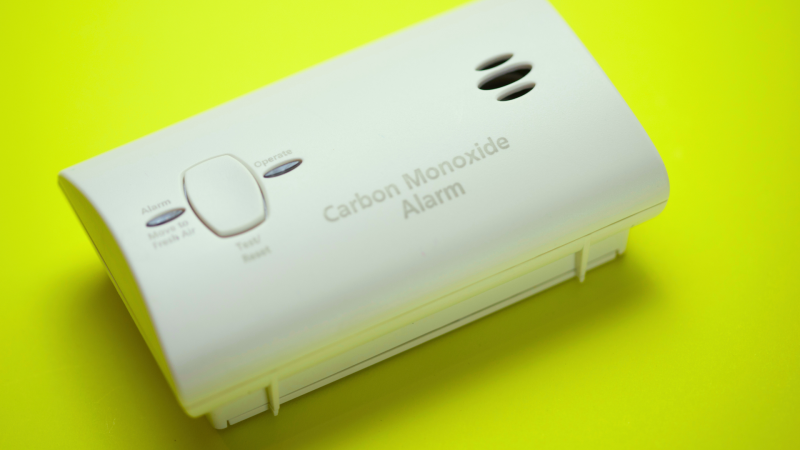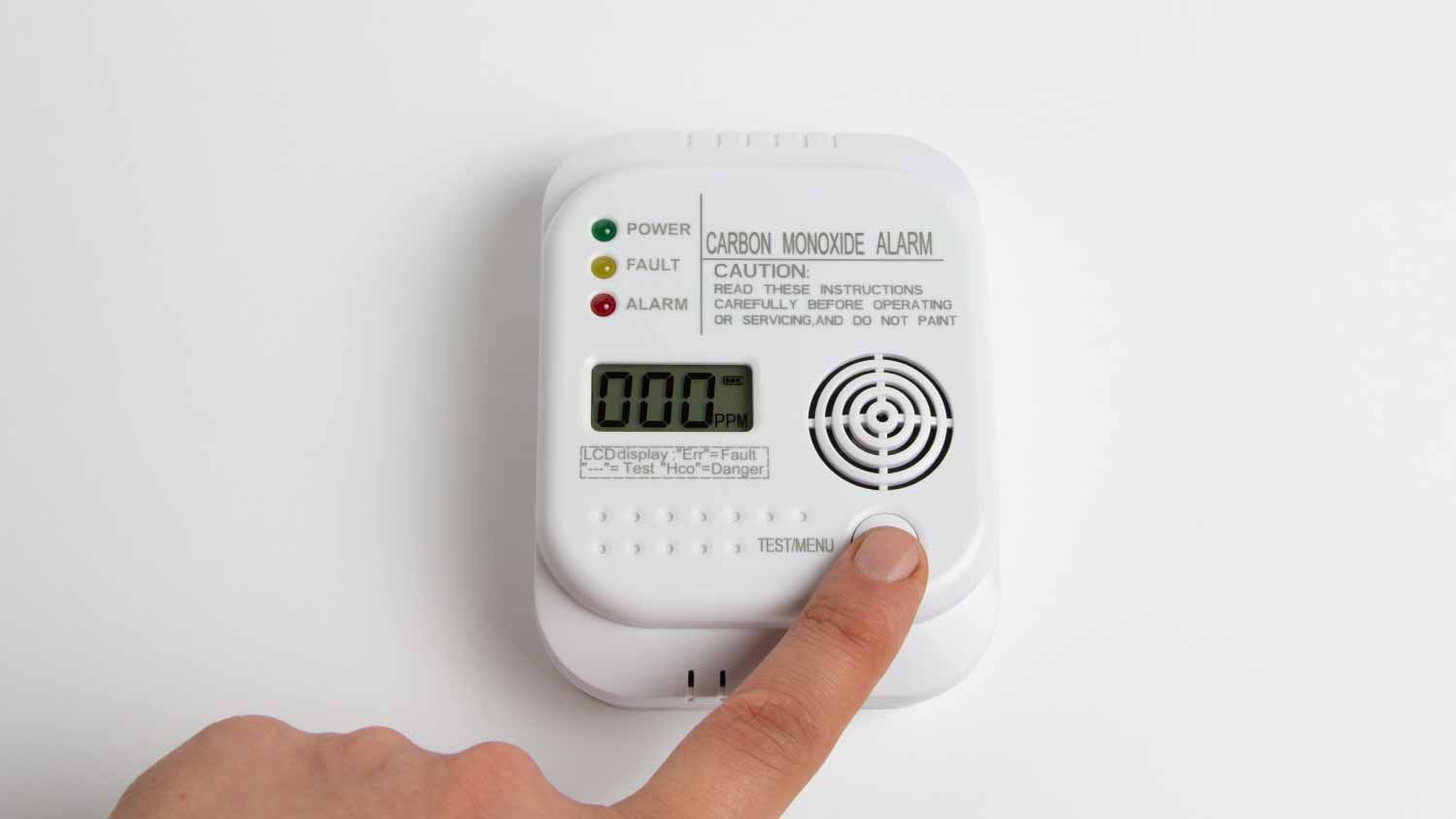Carbon Monoxide Detector Beeping 5 Times

That persistent beeping from your carbon monoxide (CO) detector can be incredibly frustrating, especially when it’s five beeps in a row. While a single beep is often a low battery warning, five beeps typically indicate a more serious issue, requiring immediate attention. This guide will help you understand what that five-beep signal means, how to troubleshoot it, and when to call a professional HVAC technician.
Understanding Carbon Monoxide and Your Detector
Carbon monoxide (CO) is an odorless, colorless gas produced by incomplete combustion of fuels like natural gas, propane, oil, wood, and even gasoline. It’s extremely dangerous and can be fatal. Your CO detector is your first line of defense against this silent killer.
A CO detector works by sensing the amount of carbon monoxide in the air. When it detects a dangerous level, it sounds an alarm to alert you to evacuate the premises.
Why is My CO Detector Beeping Five Times?
A sequence of five beeps, often repeated, usually signals one of the following:
- High Levels of Carbon Monoxide: This is the most serious reason. The detector has sensed a dangerous concentration of CO in your home.
- End of Life: Most CO detectors have a lifespan of 5-10 years. The five beeps could indicate that the detector has reached the end of its service life and needs to be replaced.
- Malfunction: The detector could be faulty and providing a false alarm. While less common, it's important to rule out other causes first.
- Specific Alarm Codes: Some advanced detectors may use the five-beep sequence to indicate a specific error code outlined in the user manual.
Immediate Actions: Safety First!
If your CO detector is beeping five times, prioritize safety:
- Evacuate Immediately: Get everyone out of the house and into fresh air. Do not waste time investigating the source while inside.
- Call Emergency Services: From a safe location, call your local fire department or 911. They have specialized equipment to detect and measure carbon monoxide levels.
- Do Not Re-enter: Do not go back inside until the fire department or a qualified professional has given the all-clear.
Troubleshooting Steps (After Emergency Services Have Cleared the Home)
Important: Only attempt these steps *after* emergency services have determined that your home is safe and the carbon monoxide levels are within acceptable limits.
- Check the Detector's Display: Some advanced detectors have a digital display that shows the CO level in parts per million (ppm). Note the reading. Even a low reading can indicate a problem that needs to be addressed.
- Review the User Manual: Your detector's user manual contains valuable information about the alarm signals and troubleshooting steps specific to your model. Look for explanations related to the five-beep sequence.
- Check the Detector's Age: Locate the manufacture date on the back or side of the detector. If it's older than 5-10 years, it's likely time for a replacement.
- Test the Detector: After addressing any immediate safety concerns, test the detector using the test button. If it still beeps five times after testing, it could indicate a malfunction or end-of-life condition.
Inspecting Potential Sources of Carbon Monoxide
After the immediate emergency is resolved, you'll need to identify the source of the carbon monoxide leak. Common culprits include:
- Furnaces: A malfunctioning furnace is a primary cause of CO leaks. Cracked heat exchangers or blocked vents can lead to incomplete combustion.
- Water Heaters: Gas-fired water heaters, especially older models, can produce carbon monoxide if not properly maintained.
- Fireplaces: Wood-burning fireplaces and gas fireplaces require proper ventilation to prevent CO buildup. Ensure the flue is open and unobstructed.
- Appliances: Gas stoves, ovens, and dryers can also be sources of CO, particularly if they are not properly ventilated or maintained.
- Vehicles: Never run a car inside a garage, even with the garage door open. Exhaust fumes contain high levels of carbon monoxide.
- Portable Generators: Generators should *never* be used indoors or in enclosed spaces. Always operate them in well-ventilated areas away from windows and doors.
DIY Inspection Tips (Proceed with Caution!)
Warning: If you suspect a carbon monoxide leak, never attempt to repair gas appliances yourself unless you are a qualified and licensed technician. Improper repairs can be dangerous and could worsen the situation.
However, you can perform some basic visual inspections:
- Furnace: Look for signs of rust, soot, or damage around the furnace. Check the flue pipe for any leaks or disconnections. Ensure the area around the furnace is clear of flammable materials.
- Water Heater: Inspect the vent pipe for any obstructions or damage. Check the area around the water heater for signs of water leaks or corrosion.
- Fireplace: Ensure the flue is open before lighting a fire. Inspect the chimney for any cracks or blockages. Consider having your chimney professionally cleaned and inspected annually.
- Appliances: Check the burners on your gas stove for proper flame color (it should be blue, not yellow or orange). Ensure gas appliances are properly ventilated.
Replacing a CO Detector
If your CO detector is beeping five times due to end-of-life or malfunction, replacing it is essential. Follow these steps:
- Choose a New Detector: Look for a CO detector that meets current safety standards (UL 2034). Consider features like digital displays, battery backup, and interconnected alarms.
- Placement: Install the new detector according to the manufacturer's instructions. Generally, CO detectors should be placed on each level of your home, near sleeping areas.
- Installation: Most CO detectors are easy to install, requiring only a screwdriver. Be sure to test the detector after installation.
Types of CO Detectors
- Electrochemical Sensors: These are the most common type of CO detector. They use a chemical sensor to detect carbon monoxide levels.
- Biomimetic Sensors: These sensors use a gel that changes color in the presence of carbon monoxide.
- Metal Oxide Semiconductor Sensors: These sensors use a metal oxide semiconductor to detect carbon monoxide levels.
When to Call a Professional HVAC Technician
While some troubleshooting steps can be done yourself, there are situations where calling a qualified HVAC technician is crucial:
- Suspected Furnace Issues: If you suspect your furnace is the source of the carbon monoxide leak, do not attempt to repair it yourself. Furnaces are complex appliances, and improper repairs can be dangerous. A qualified technician can inspect your furnace, identify the problem, and make necessary repairs.
- Water Heater Problems: Similar to furnaces, water heaters require specialized knowledge and tools to repair safely. Contact a professional for any water heater issues.
- Persistent Alarms: If your CO detector continues to alarm after troubleshooting and replacing the detector, there may be an underlying issue that requires professional investigation.
- Uncertainty: If you are unsure about the source of the carbon monoxide leak or how to address it, err on the side of caution and call a professional.
Tools You Might Need
- Screwdriver (Phillips and flathead)
- Ladder (for reaching high detectors)
- New CO detector
- User manual for your CO detector
Estimated Repair Costs
These are just estimates, and actual costs can vary depending on your location and the specific problem.
- CO Detector Replacement: $20 - $100+ (depending on features)
- Furnace Inspection: $75 - $150
- Furnace Repair (minor): $150 - $500
- Furnace Repair (major): $500 - $2000+
- Water Heater Inspection: $75 - $150
- Water Heater Repair (minor): $150 - $400
- Water Heater Replacement: $600 - $2000+
Preventative Maintenance
Regular maintenance can help prevent carbon monoxide leaks and ensure the safety of your home:
- Annual Furnace Inspection: Have your furnace professionally inspected and tuned up each year.
- Water Heater Flush: Flush your water heater annually to remove sediment buildup.
- Chimney Cleaning: Have your chimney professionally cleaned and inspected annually.
- Regular Appliance Maintenance: Keep your gas appliances clean and properly ventilated.
- Replace CO Detectors: Replace your CO detectors every 5-10 years, or as recommended by the manufacturer.
Final Thoughts
A carbon monoxide detector beeping five times is a serious matter that should never be ignored. By understanding the potential causes, taking immediate safety precautions, and following the troubleshooting steps outlined in this guide, you can protect yourself and your family from the dangers of carbon monoxide poisoning. Remember, when in doubt, always call a professional. Your safety is paramount.










